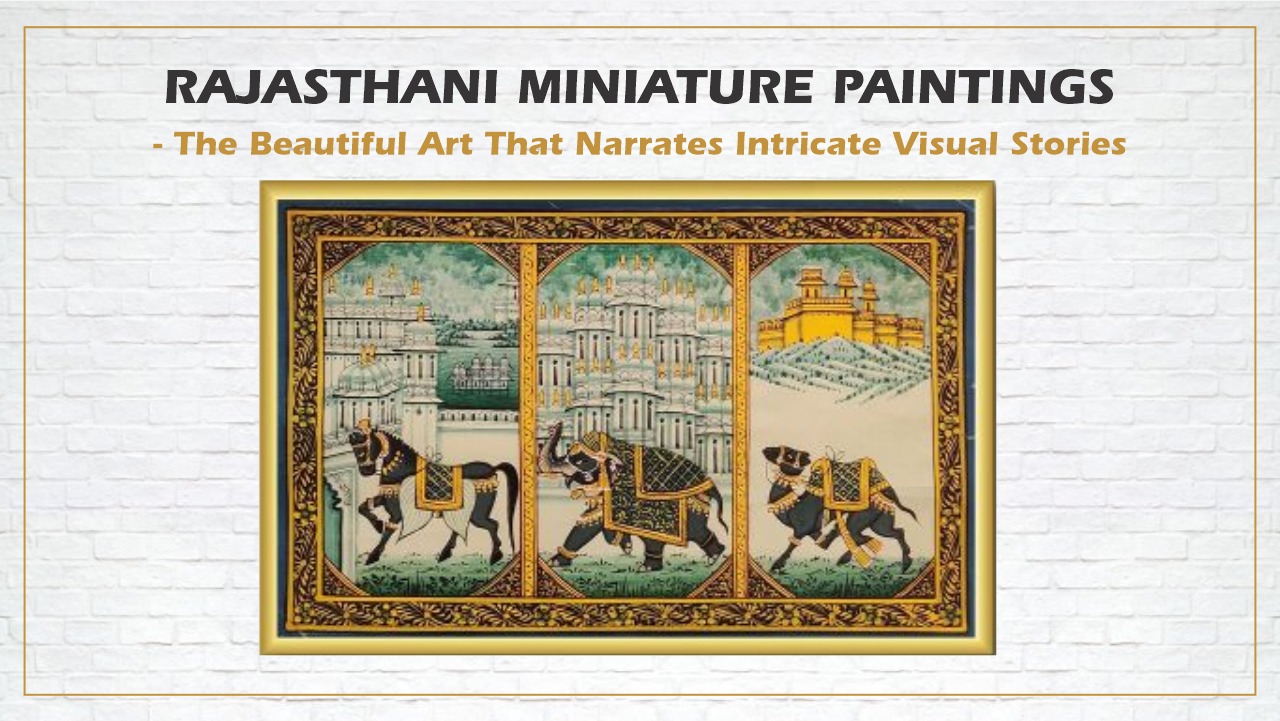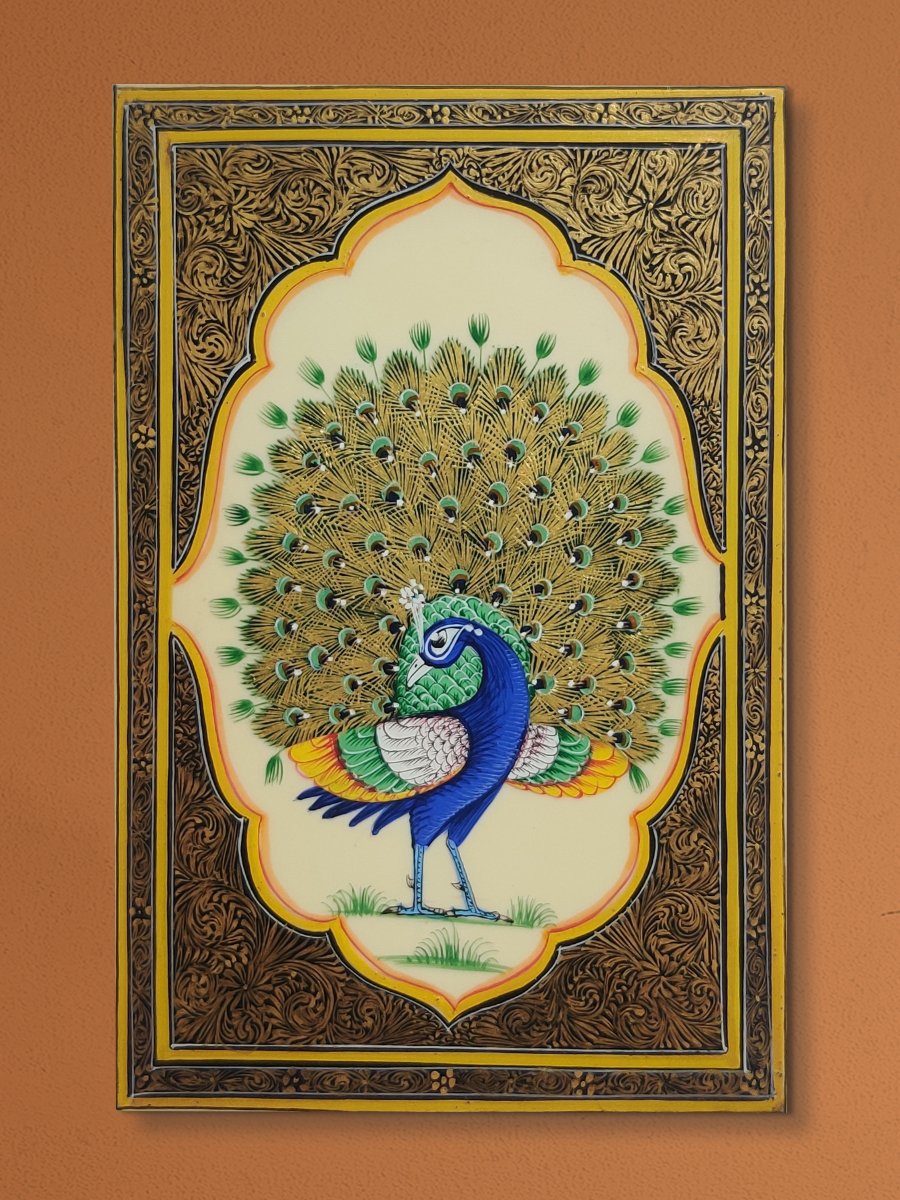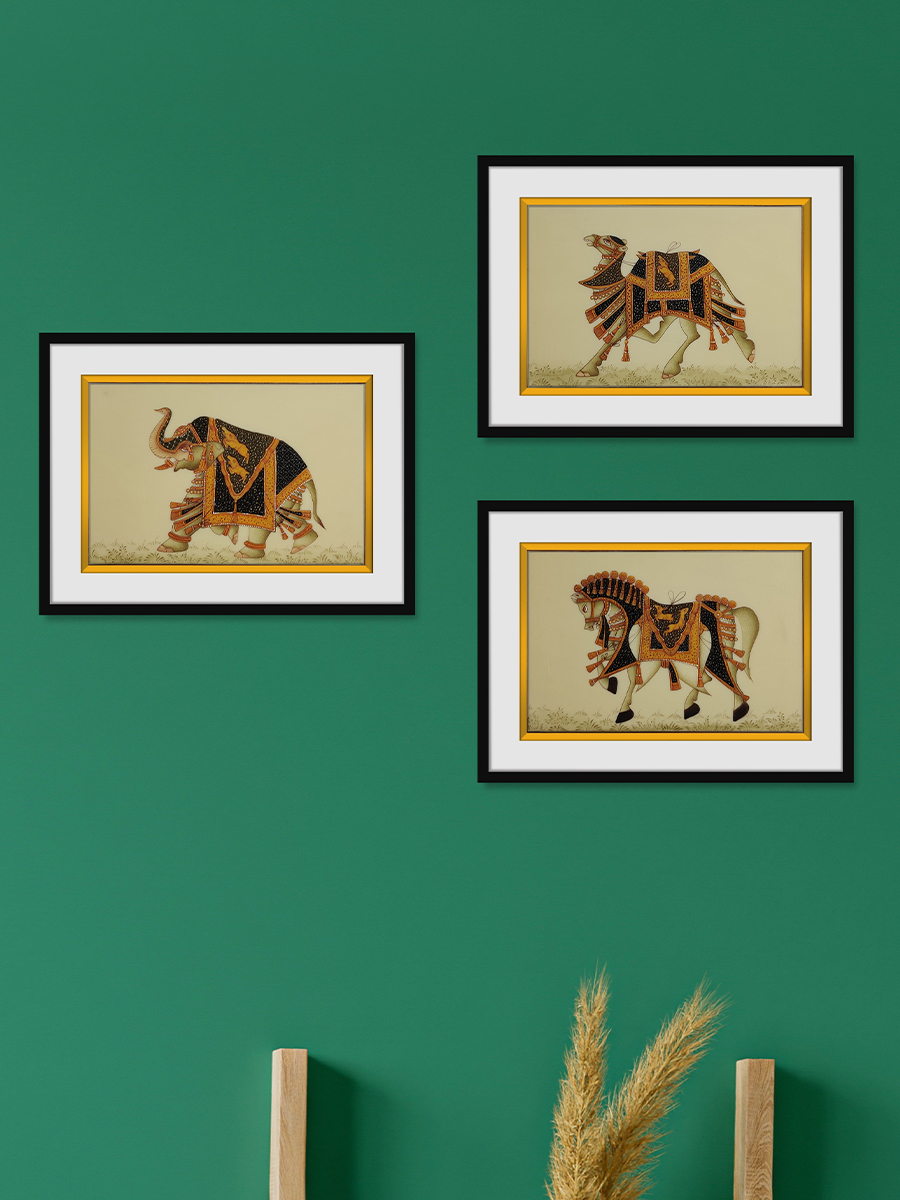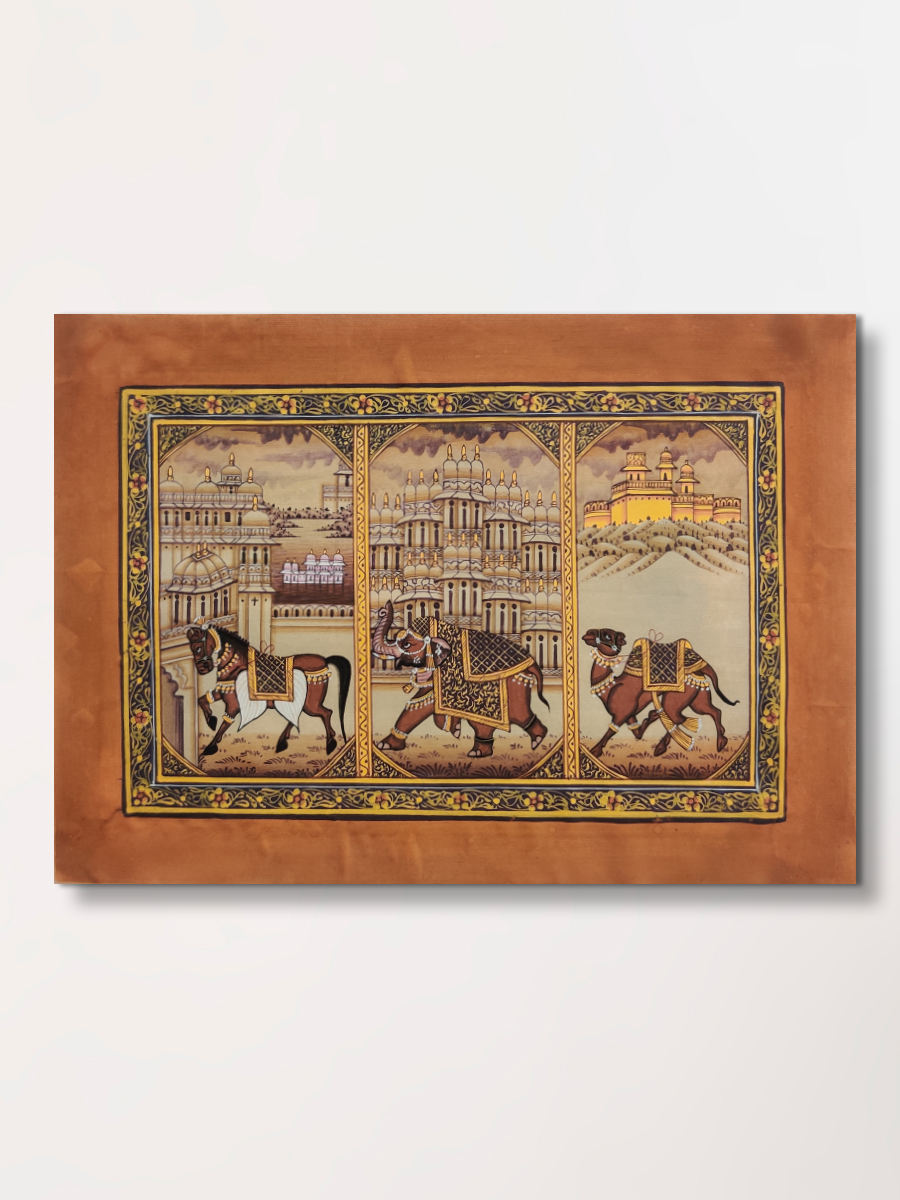Rajasthani Miniature Paintings - The Beautiful Art That Narrates Intricate Visual Stories

Different Miniature Painting Styles of Rajasthan:
There are various miniature painting styles of Rajasthan that were used to create magnificent pieces of art and are still practised today. Each of them has its own unique characteristics and technique. These paintings remind us of the vibrant and colourful history of a land that continues to inspire and captivate people to this day.
Handmade Rajasthani Miniature Painting of orange green and blue peacock
- Mewar Style: Originated in the 16th century, this is one of the earliest and most important styles of Rajasthani miniature paintings. It often depicts scenes from Hindu mythology, as well as courtly life, battles, and festivals. Rich and vivid colours used in bold and dramatic ways convey emotion and drama. One of the key features of the Mewar style of miniature paintings is the use of fine brushwork in creating multiple layers of detailing. This gives a sense of depth and complexity to the painting. Another characteristic is the use of strong, expressive lines to create vibrancy and energy within the composition. This style is especially evident in the depiction of horses and other animals exuding power and grace.
- Bikaner Style: The Bikaner style of Rajasthani paintings was developed in the late 17th by artists from the Mughal workshops who dispersed after Aurangzeb ceased to offer patronage. It blends the Mughal and Deccan styles of painting. Thus, it is characterised by the use of a vivid and warm colour palette, with reds, yellows, oranges, and pinks often dominating the compositions. This vibrant palette is further enhanced by the use of gold and silver pigments, which lends a luminous quality to the paintings. Figures are depicted with expressive faces and intricate costumes, often against backgrounds that include landscapes and architectural elements. Depictions of courtly life, scenes from Hindu mythology, and portraits of rulers and nobles are most often seen here. The Bikaner style miniature paintings were originally created as book illustrations or as standalone artworks.
- Bundi Style: The Bundi style was heavily influenced by the Mughal style as it was introduced by Mughal artists who fled to Bundi during Aurangzeb’s time. It is known for its delicate brushwork, and intricate detailing. The paintings feature humans, animals, landscapes, and court scenes depicted in a natural and relaxed pose, rendered with great attention to detail. One of the unique features of the Bundi style is its use of multiple perspectives within the same composition, which gives the painting a sense of depth and movement. This technique is particularly effective in the depiction of landscapes, where the use of multiple perspectives creates a sense of vastness and expansiveness.
- Kota Style: The Kota style which originated in the 17th century is one of the most distinctive and recognizable styles of Rajasthani miniature painting. Though it was influenced heavily by the Bundi style, it has carved a special place for itself by the bold use of colour, and dynamic compositions. The colours are used to create a sense of dynamism and energy within the composition, which is often heightened by the use of strong, diagonal lines. Intricate patterning and ornamentation create a sense of richness and detail within the composition that often involves motif work. At times, shards of glass and mirror are also used to create a 3-dimensional collage effect.
- Kishangarh Style: Possibly among the newest styles of Rajasthani miniature paintings, this style flourished under the patronage of Raja Sawant Singh who ruled Kishangarh from 1748 to 1757. He was fascinated by the love story of Lord Krishna and Radha. So, it is not surprising that the paintings often depict Radha and Krishna in a stylized and idealised form. They have elongated eyes, thin waists, and delicate features and are shown in a dreamy and otherworldly landscape, surrounded by flowers and birds. The hallmark of this style is the use of a specific shade of green (Kishangarh green), which is used to depict the clothes and jewellery of the figures in the paintings. The paintings often feature ornate borders, floral designs, and other decorative elements, which add to the overall aesthetic appeal of the composition.
Handmade Rajasthani Miniature Painting of 3 traditional motiffs on resin plates
Many of these paintings were done in real gold. The artisans would use real gold to make intricate designs, keeping in mind the fine detail work. Every single line was carefully sketched using squirrel brush and border using real gold ink. The fine work took a lot of patience and expertise to paint on the gold surface.
Handmade Rajasthani Miniature Painting of 3 traditional motiffs with palaces in the evening
The Family Heritage - Passing on the art as a Tradition:
This priceless heritage has been preserved and transmitted across several generations of artisans and craftspeople through word of mouth and intensive training. There have been recorded instances of skilled painters creating masterpieces on individual grains of rice! Fact of the matter is that there are no instruction manuals from which these painting styles can be learnt. It is the recognition of the uniqueness, intricate techniques and exceptional human effort that go behind the making of these exceptional artists that motivate them to pass on the traditions and skills from one generation to the other. This is really what goes behind the making of these extraordinary miniature painting maestros.


 USD
USD  GBP
GBP EUR
EUR AED
AED





